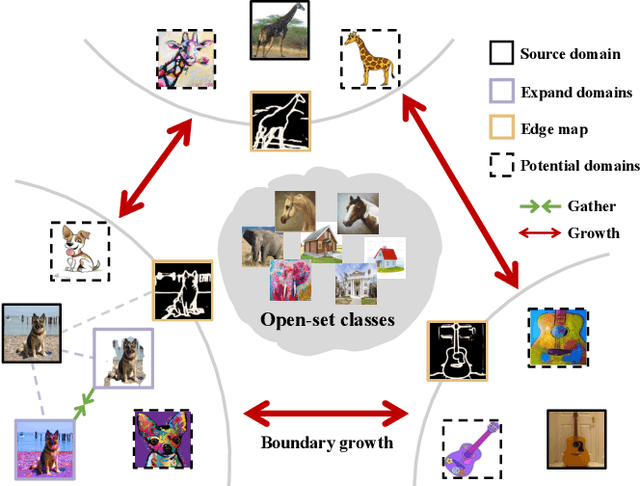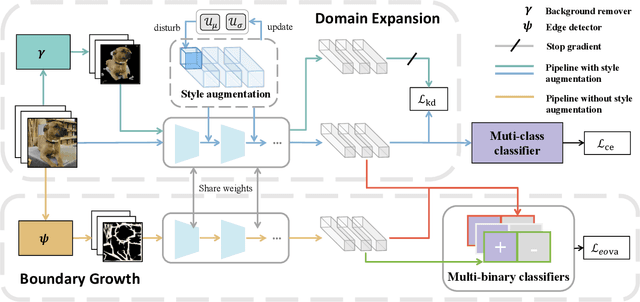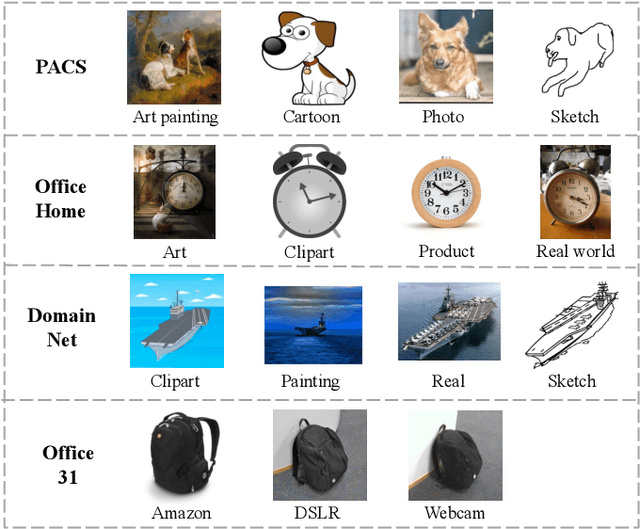Pengkun Jiao
Don't Deceive Me: Mitigating Gaslighting through Attention Reallocation in LMMs
Apr 13, 2025Abstract:Large Multimodal Models (LMMs) have demonstrated remarkable capabilities across a wide range of tasks. However, their vulnerability to user gaslighting-the deliberate use of misleading or contradictory inputs-raises critical concerns about their reliability in real-world applications. In this paper, we address the novel and challenging issue of mitigating the negative impact of negation-based gaslighting on LMMs, where deceptive user statements lead to significant drops in model accuracy. Specifically, we introduce GasEraser, a training-free approach that reallocates attention weights from misleading textual tokens to semantically salient visual regions. By suppressing the influence of "attention sink" tokens and enhancing focus on visually grounded cues, GasEraser significantly improves LMM robustness without requiring retraining or additional supervision. Extensive experimental results demonstrate that GasEraser is effective across several leading open-source LMMs on the GaslightingBench. Notably, for LLaVA-v1.5-7B, GasEraser reduces the misguidance rate by 48.2%, demonstrating its potential for more trustworthy LMMs.
Visual Cue Enhancement and Dual Low-Rank Adaptation for Efficient Visual Instruction Fine-Tuning
Nov 19, 2024Abstract:Fine-tuning multimodal large language models (MLLMs) presents significant challenges, including a reliance on high-level visual features that limits fine-grained detail comprehension, and data conflicts that arise from task complexity. To address these issues, we propose an efficient fine-tuning framework with two novel approaches: Vision Cue Enhancement (VCE) and Dual Low-Rank Adaptation (Dual-LoRA). VCE enhances the vision projector by integrating multi-level visual cues, improving the model's ability to capture fine-grained visual features. Dual-LoRA introduces a dual low-rank structure for instruction tuning, decoupling learning into skill and task spaces to enable precise control and efficient adaptation across diverse tasks. Our method simplifies implementation, enhances visual comprehension, and improves adaptability. Experiments on both downstream tasks and general benchmarks demonstrate the effectiveness of our proposed approach.
Domain Expansion and Boundary Growth for Open-Set Single-Source Domain Generalization
Nov 05, 2024



Abstract:Open-set single-source domain generalization aims to use a single-source domain to learn a robust model that can be generalized to unknown target domains with both domain shifts and label shifts. The scarcity of the source domain and the unknown data distribution of the target domain pose a great challenge for domain-invariant feature learning and unknown class recognition. In this paper, we propose a novel learning approach based on domain expansion and boundary growth to expand the scarce source samples and enlarge the boundaries across the known classes that indirectly broaden the boundary between the known and unknown classes. Specifically, we achieve domain expansion by employing both background suppression and style augmentation on the source data to synthesize new samples. Then we force the model to distill consistent knowledge from the synthesized samples so that the model can learn domain-invariant information. Furthermore, we realize boundary growth across classes by using edge maps as an additional modality of samples when training multi-binary classifiers. In this way, it enlarges the boundary between the inliers and outliers, and consequently improves the unknown class recognition during open-set generalization. Extensive experiments show that our approach can achieve significant improvements and reach state-of-the-art performance on several cross-domain image classification datasets.
RoDE: Linear Rectified Mixture of Diverse Experts for Food Large Multi-Modal Models
Jul 17, 2024



Abstract:Large Multi-modal Models (LMMs) have significantly advanced a variety of vision-language tasks. The scalability and availability of high-quality training data play a pivotal role in the success of LMMs. In the realm of food, while comprehensive food datasets such as Recipe1M offer an abundance of ingredient and recipe information, they often fall short of providing ample data for nutritional analysis. The Recipe1M+ dataset, despite offering a subset for nutritional evaluation, is limited in the scale and accuracy of nutrition information. To bridge this gap, we introduce Uni-Food, a unified food dataset that comprises over 100,000 images with various food labels, including categories, ingredients, recipes, and ingredient-level nutritional information. Uni-Food is designed to provide a more holistic approach to food data analysis, thereby enhancing the performance and capabilities of LMMs in this domain. To mitigate the conflicts arising from multi-task supervision during fine-tuning of LMMs, we introduce a novel Linear Rectification Mixture of Diverse Experts (RoDE) approach. RoDE utilizes a diverse array of experts to address tasks of varying complexity, thereby facilitating the coordination of trainable parameters, i.e., it allocates more parameters for more complex tasks and, conversely, fewer parameters for simpler tasks. RoDE implements linear rectification union to refine the router's functionality, thereby enhancing the efficiency of sparse task allocation. These design choices endow RoDE with features that ensure GPU memory efficiency and ease of optimization. Our experimental results validate the effectiveness of our proposed approach in addressing the inherent challenges of food-related multitasking.
Unlocking Textual and Visual Wisdom: Open-Vocabulary 3D Object Detection Enhanced by Comprehensive Guidance from Text and Image
Jul 07, 2024Abstract:Open-vocabulary 3D object detection (OV-3DDet) aims to localize and recognize both seen and previously unseen object categories within any new 3D scene. While language and vision foundation models have achieved success in handling various open-vocabulary tasks with abundant training data, OV-3DDet faces a significant challenge due to the limited availability of training data. Although some pioneering efforts have integrated vision-language models (VLM) knowledge into OV-3DDet learning, the full potential of these foundational models has yet to be fully exploited. In this paper, we unlock the textual and visual wisdom to tackle the open-vocabulary 3D detection task by leveraging the language and vision foundation models. We leverage a vision foundation model to provide image-wise guidance for discovering novel classes in 3D scenes. Specifically, we utilize a object detection vision foundation model to enable the zero-shot discovery of objects in images, which serves as the initial seeds and filtering guidance to identify novel 3D objects. Additionally, to align the 3D space with the powerful vision-language space, we introduce a hierarchical alignment approach, where the 3D feature space is aligned with the vision-language feature space using a pre-trained VLM at the instance, category, and scene levels. Through extensive experimentation, we demonstrate significant improvements in accuracy and generalization, highlighting the potential of foundation models in advancing open-vocabulary 3D object detection in real-world scenarios.
 Add to Chrome
Add to Chrome Add to Firefox
Add to Firefox Add to Edge
Add to Edge